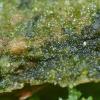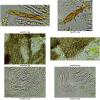
07-06-2016 21:38
 Bernard CLESSE
Bernard CLESSE
Bonsoir à tous,Voici ce que pense être un Mollis

07-06-2016 12:59
Thorben HülsewigHi there,for 2 days i found Lasiosphaeria ovina o

07-06-2016 01:19
 Rubén Martínez-Gil
Rubén Martínez-Gil
Hola a todos. Subo unas fotos de unos apotecios q

22-05-2016 23:18
 Bernard CLESSE
Bernard CLESSE
Bonsoir à tous,Pourriez-vous me donner votre avis

07-06-2016 09:42
En madera sin determinar No tengo claro si lo que

06-06-2016 12:17
 Man Myco
Man Myco
Hello,I am looking for bibliographic reference con

06-06-2016 08:11
 Zuzana Sochorová (Egertová)
Zuzana Sochorová (Egertová)
Hello,would someone have following paper, please?G
Mollisia sur branche pourrie de pin envahie d'algues
Bernard CLESSE,
07-06-2016 21:38
 Bonsoir à tous,
Bonsoir à tous,Voici ce que pense être un Mollisia trouvé en sous-bois, sur branche pourrie de pin envahie d'algues gélatineuses. Avec les photos ci-jointes, est-ce que cela donne déjà une idée du groupe ou bien est-ce utopique d'aller plus loin que le genre sans autres renseignements ?
a) paraphyses cylindriques, à contenu réfringent
b) asques (très rares) IKI+
c) excipulum noirâtre à textura globosa
Bernard





